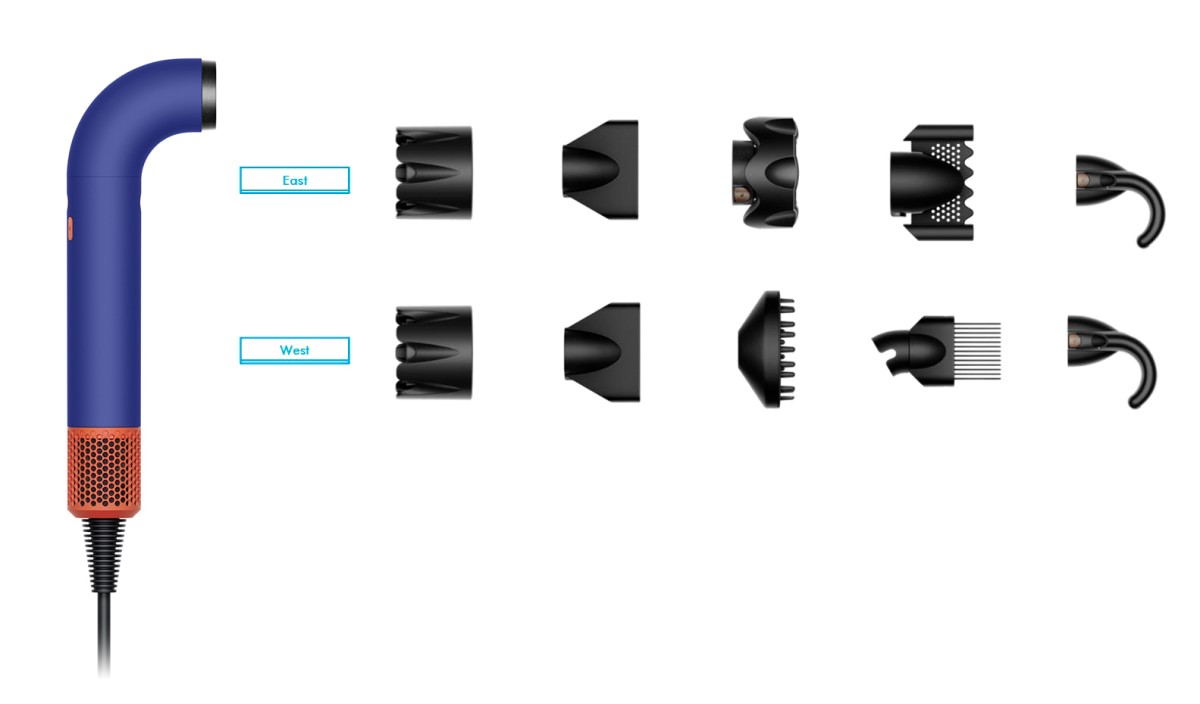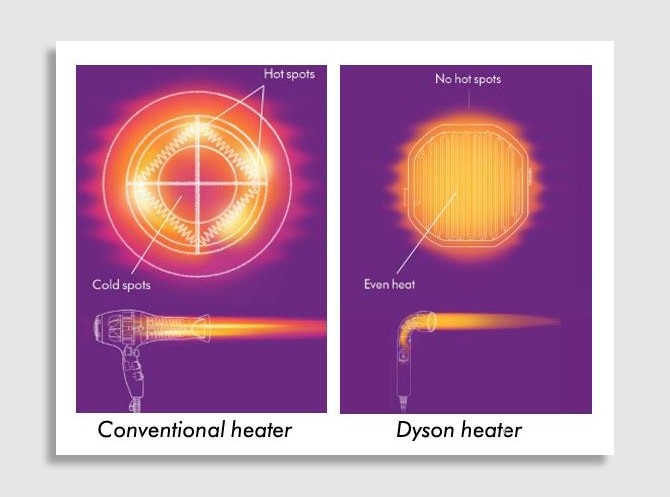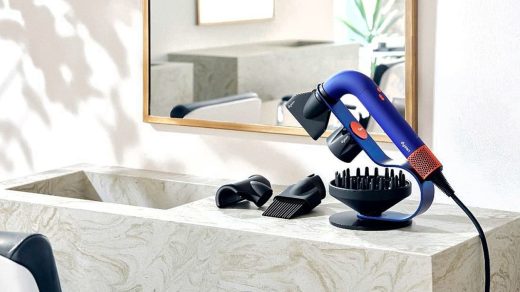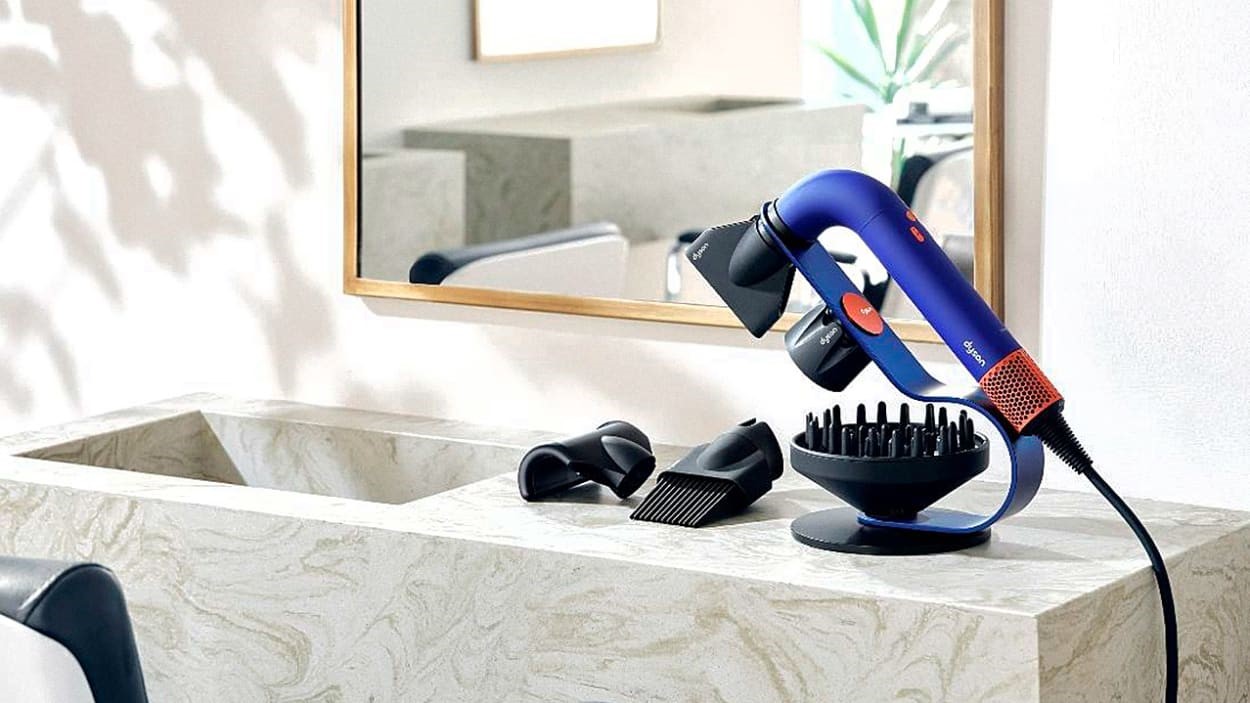Dyson’s new $569 hairdryer is smaller, lighter, and looks nothing like a hairdryer
Eight years ago, Dyson surprised the world by launching a $400 hairdryer called the Supersonic. At the time, it was unclear whether consumers would embrace a beauty product made by a company that had, for the previous two decades, been known for its vacuum cleaners.
But the Supersonic proved to be a hit. Today, it is a significant driver of Dyson’s $7.8 billion in annual revenues. So why on earth would the company decide to completely re-engineer one of its top-selling products?
For James Dyson, who founded his namesake company in 1991, the answer is simple. He can’t help tinkering with the products in his portfolio. “I have a passion for products that other people think of as boring commodities,” he says. “Vacuums, hairdryers, hand dryers—they’re things people use everyday, but they’re unloved. So, I keep trying to find ways to make them better.”

Today, Dyson launches a completely redesigned hairdryer called the Supersonic “r,” which looks like nothing else on the market and will cost $569. It’s built like a slim tube, reminiscent of a submarine’s periscope, or the lowercase letter “r” for which it is named. The company’s engineers have worked to make this device 20% light and 30% smaller than the original Supersonic, making it easier to manipulate and carry for long stretches of time. It also weighs 11.4 ounces, which is less than a typical bottle of hairspray.
Hairstylists’ Pain Points
At launch, Dyson will first be partnering with professional stylists, many of whom will use the Supersonic “r” backstage during fashion week, which is currently underway in New York. From the time Dyson began making haircare tools, it has partnered with professionals. It’s a clever strategy: These experts are used to spending more on high-quality tools, and if they find a product that works, they are likely to recommend it to their clients. This is how the original Supersonic took off.
But Dyson has also been keen to learn more about stylists’ struggles and pain points. Over the last eight years, the company has worked closely with nearly 700 stylists to better understand their work. They discovered, for instance, that stylists see between four and 16 clients a day, for an average of an hour each. They need to adapt the angle of their hair dyer up to 30 times in a single styling session, which can lead to strain injuries such as carpal tunnel syndrome.
“There’s a real difference between how a professional works versus a consumer,” says Steve Williamson, Dyson’s hair care category manager. “A consumer may use the hairdryer every two days for 30 minutes. In a salon, it’s all about speed and pace. If we could solve problems for them, the consumer would also benefit.”
Miniaturizing Technology
Dyson decided it was imperative to continue improving its hairdryer. This effort was partly supported by the fact that Dyson committed $630 billion to expand and accelerate its research and development across its beauty portfolio. The company plans to launch 20 new beauty products by 2026, and the “r” is among its first.
Dyson’s engineers wrestled with how to make the technology inside the hairdryer smaller, while ensuring it remained just as powerful. James Dyson explains that for 30 years, the company has been focused on miniaturizing its devices’ motors, which is what activates the high velocity air flow. But the reason that hair dyers—including the original Supersonic—have such a large head, is to contain the heating element. “For the Supersonic, we had made the motor so small, it could fit into the handle,” Dyson says. “We thought that if we could develop the world’s smallest heater, we wouldn’t need the big part at the top of the hairdryer.”

So that’s why Dyson’s engineers did. In a traditional hairdryer, the heating element has several hot spots where there is a concentration of heat, next to cold spots where the wires are. This tends to reduce the overall temperature of the airflow. So the engineers tried to find ways to eliminate as many of these cold spots as possible, to allow for a more even distribution of heat. They did this by placing the heating elements around the curve of the device, so all airflow through the device makes contact with it. They created thinner wires and places them outside of the flow of air, reducing the occurrence of cold spots. “The result is that all airflow that comes through is evenly heated,” Williamson says.
But another benefit of the new heating element is that it allows for more precise temperature control. The engineers have worked to adjust the heat so that it is just hot enough to dry the hair, but it does not go beyond 302 degrees Fahrenheit, which is when irreversible damage happens to hair.
The “r” has attachments for different styling needs, including a concentrator nozzle and a diffuser. Cleverly, each attachment has an RFID chip that communicates with the hairdryer, automatically adjusting the motor to deliver the right amount of airflow and temperature. The diffuser, for instance, is set to a low temperature to reduce frizz and not disrupt the curl pattern.
Beautiful Devices
This new hairdryer is meant to be even more functional than the one that came before it, but it is also beautiful. It has a pleasingly slim and curvaceous form that does not resemble any other hairdryer on the market.
This is no mistake. James Dyson explains that he was first trained as a designer at the Royal College of Art; he went on to learn engineering so he could make the kinds of products he was interested in. “This was a slightly unusual choice when I made it back in the seventies,” Dyson says. “Being a designer was much more glamorous, and being an engineer in a white coat was perceived as boring. I just didn’t see it like that.”
Ultimately, a big part of Dyson’s success has come from how attractive its products are. Dyson’s products are significantly more expensive than others on the market, largely because the technology inside them costs more to develop and produce. Part of the reason consumers are willing to pay more for them is because of their elevated, aesthetically pleasing design. “For me, the technology is more important,” Dyson says. “But there’s no reason why it can’t be a beautiful object as well.”
(23)



